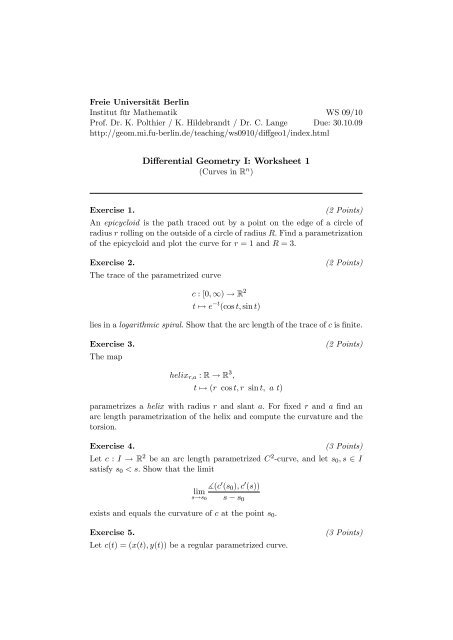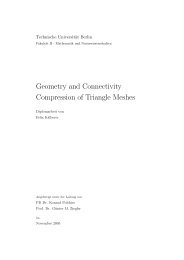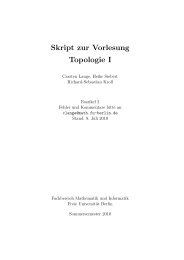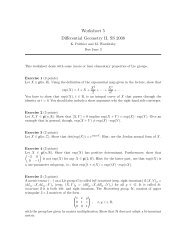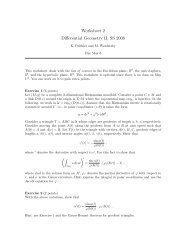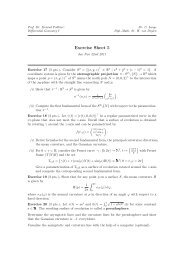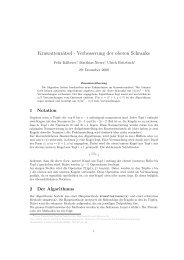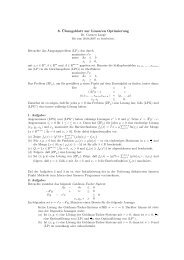Differential Geometry I: Worksheet 1 - Freie Universität Berlin
Differential Geometry I: Worksheet 1 - Freie Universität Berlin
Differential Geometry I: Worksheet 1 - Freie Universität Berlin
You also want an ePaper? Increase the reach of your titles
YUMPU automatically turns print PDFs into web optimized ePapers that Google loves.
<strong>Freie</strong> <strong>Universität</strong> <strong>Berlin</strong><br />
Institut für Mathematik WS 09/10<br />
Prof. Dr. K. Polthier / K. Hildebrandt / Dr. C. Lange Due: 30.10.09<br />
http://geom.mi.fu-berlin.de/teaching/ws0910/di¤geo1/index.html<br />
Di¤erential <strong>Geometry</strong> I: <strong>Worksheet</strong> 1<br />
(Curves in R n )<br />
Exercise 1. (2 Points)<br />
An epicycloid is the path traced out by a point on the edge of a circle of<br />
radius r rolling on the outside of a circle of radius R. Find a parametrization<br />
of the epicycloid and plot the curve for r = 1 and R = 3.<br />
Exercise 2. (2 Points)<br />
The trace of the parametrized curve<br />
c : [0; 1) ! R 2<br />
t 7! e t (cos t; sin t)<br />
lies in a logarithmic spiral. Show that the arc length of the trace of c is …nite.<br />
Exercise 3. (2 Points)<br />
The map<br />
helixr;a : R ! R 3 ;<br />
t 7! (r cos t; r sin t; a t)<br />
parametrizes a helix with radius r and slant a. For …xed r and a …nd an<br />
arc length parametrization of the helix and compute the curvature and the<br />
torsion.<br />
Exercise 4. (3 Points)<br />
Let c : I ! R 2 be an arc length parametrized C 2 -curve, and let s0; s 2 I<br />
satisfy s0 < s. Show that the limit<br />
](c<br />
lim<br />
s!s0<br />
0 (s0); c0 (s))<br />
s s0<br />
exists and equals the curvature of c at the point s0.<br />
Exercise 5. (3 Points)<br />
Let c(t) = (x(t); y(t)) be a regular parametrized curve.
1. Show that for the curvature the following formula holds<br />
(t) =<br />
_x(t)y(t) x(t) _y(t)<br />
:<br />
( _x(t) 2 + _y(t) 2 ) 3<br />
2<br />
2. Let R be an orientation preserving rigid motion of R 2 ; i.e.<br />
R(x; y) = M x<br />
y<br />
+ a<br />
b<br />
where M 2 SO(2) and a; b 2 R. Show that R c has the same curvature<br />
as c.<br />
;


